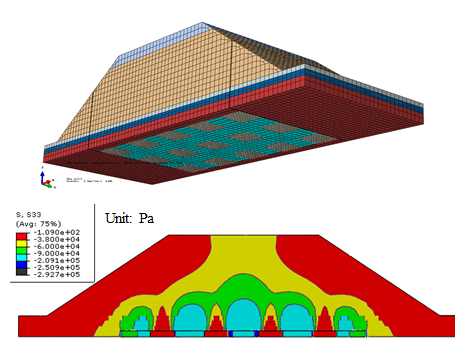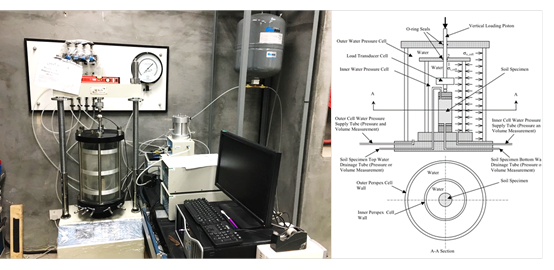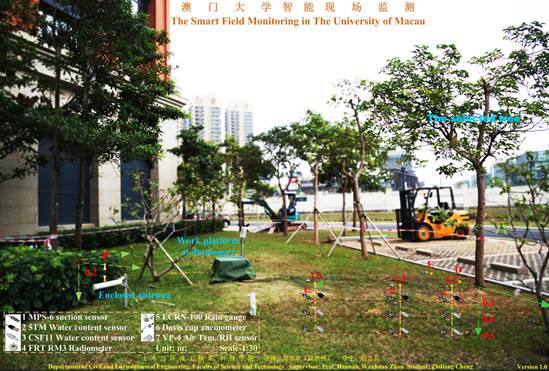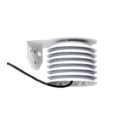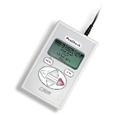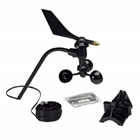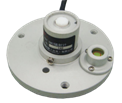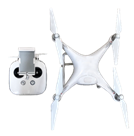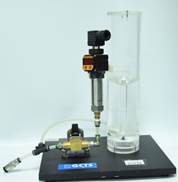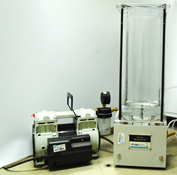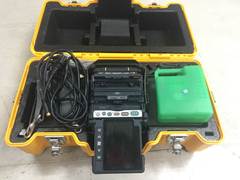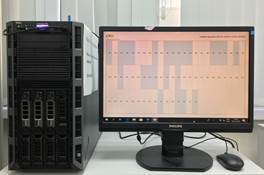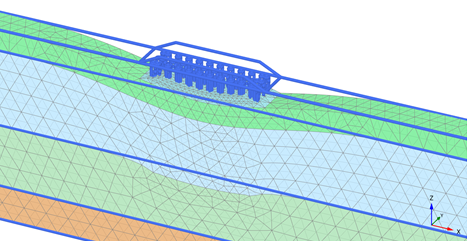| Academic Staff in charge | Prof. Wanhuan ZHOU |
Objective
Geomechanics Laboratory is equipped with facilities for conducting advanced laboratory tests on geomaterials, numerical modeling and field monitoring for understanding the fundamental behavior soils and mechanism of geotechnical structures. With the rapid development of AI and IoT techniques, the lab also aims to support multidisciplinary research on the risk analysis and disaster prevention in geotechnical engineering. Currently, the Laboratory apparatus include unsaturated triaxial system, triaxial/permeability system, field monitoring systems with wired/wireless transmission datalogger, and customized instruments.
Facilities
- Double-cell Unsaturated Triaxial System Equipped Local Strain Transducers (VJtech Ltd.).
- Triaxial/Permeability Testing System (Automated Stress Path type, Geocomp Corp.).
- Modified Direct Shear System (VJtech Ltd.) with Lab-Designed Shear Box and Multi-Roughness Shear Plates.
- Automatic Oedometer System (VJtech Ltd.).
- Bending element test system (AGILENT waveform generator, PIEZO Linear Amplifier, KROHN-HITE Tunable Active Filters, TEKTRONIC oscilloscope).
- Optical Sensing Interrogator and Calibration Platform (Micron optics, SM130).
- Wireless Transmission Datalogger (Campbell Scientific CR1000).
- Lab-designed Geotechnical Test Sample Preparation Device
- Lab-designed Infiltration Test System for Unsaturated Soil.
- Fiber Optic Fusion Splicer (Fujikura Ltd, 80S).
- De-Aired Water Preparation System (Geokon Ltd.).
- Modified Diffused Air Flushing Device (GCTS Ltd.).
- I-SCAN Pressure Mapping System (Tekscan Ltd.).
- High Performance Server (HPS, Dell Ltd.).
Experiments
- Unsaturated Triaxial System
- Triaxial/Permeability Test System
- Interface Direct Shear System
- Oedometer Test
- Bender Element Test
- Deformation Calibration Platform
- Field Monitoring Test on Vegetated Soil
- Pressure Measuring System
- Large-scale Model Test
Unsaturated Triaxial System
This system is designed to test the strength of unsaturated soil and enables variable suctions to be applied whilst providing accurate measurement of soil volume change. It is equipped with bender element system and local strain system.
Yin, J., “A Double Cell Triaxial System for Continuous Measurement of Volume Changes of an Unsaturated or Saturated Soil Specimen in Triaxial Testing,” Geotechnical Testing Journal, Vol. 26, No. 3, 2003, pp. 353-358, https://doi.org/10.1520/GTJ11307J. ISSN 0149-6115
Triaxial/Permeability Test System
This system is capable of providing fully automatic total and effective triaxial testing including Consolidated Drained (CD), Consolidated Undrained (CU), Unconsolidated Undrained (UU) and Stress Path tests. It can also run flexible wall permeability tests on a wide variety of materials quickly and accurately.
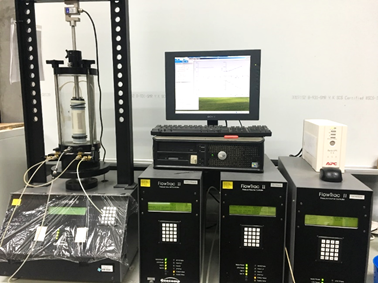 Triaxial/Permeability Testing System (Automated Stress Path type, Geocomp Corp.).
Triaxial/Permeability Testing System (Automated Stress Path type, Geocomp Corp.).Direct Shear System
The direct shear system can conduct traditional direct shear tests on soils. The device is modified for interface shear tests. Various steel plates are manufactured to perform interface shear tests under different levels of relative roughness and sawtooth element orientations.
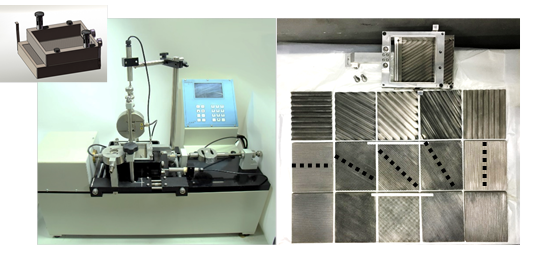 Direct Shear System (VJtech Ltd.) with modifications for interface shear, Lab-Designed Shear Box and Shear Plates.
Direct Shear System (VJtech Ltd.) with modifications for interface shear, Lab-Designed Shear Box and Shear Plates.Oedometer Test Device
The device is used to determine compression and consolidation parameters of soils with automatic data acquisition.
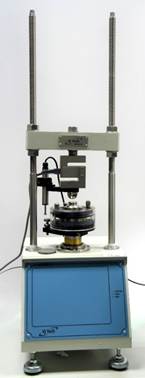 Automatic Oedometer System (VJtech Ltd.).
Automatic Oedometer System (VJtech Ltd.).Bender Element Test System
The system include Agilent waveform generator, Piezo Linear Amplifier, Krohn-Hite Tunable Active Filters, Tektronic oscilloscope. The Bender Element testing is a non-destructive method determining the small strain shear modulus (GMax) of a soil sample.
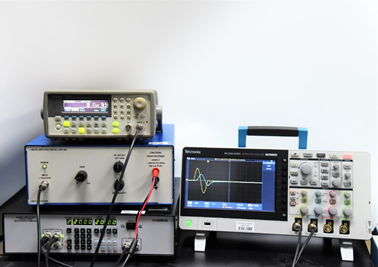 Bending element test system (Agilent waveform generator, Piezo Linear Amplifier, Krohn-Hite Tunable Active Filters, Tektronic oscilloscope).
Bending element test system (Agilent waveform generator, Piezo Linear Amplifier, Krohn-Hite Tunable Active Filters, Tektronic oscilloscope).Deformation Calibration Platform
The calibration platform is lab-designed for the calibration of underground deformation measurement sensor, such as a new thin-walled hollow tube with embedded Fiber Bragg Grating (FBG) sensors. The platform can deformate a slender sensor to a certain direction and deformation.
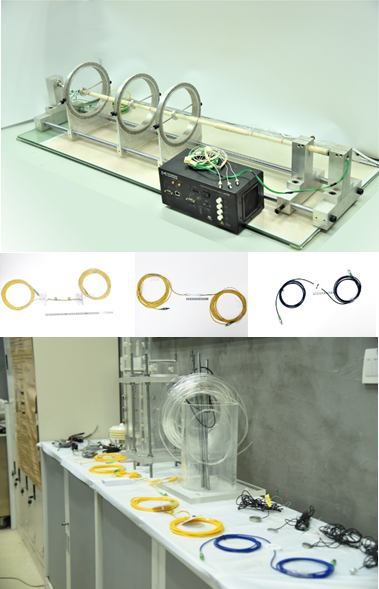 Optical Sensing Interrogator (Micron optics, SM130) and Sensor Calibration Platform
Optical Sensing Interrogator (Micron optics, SM130) and Sensor Calibration PlatformField Monitoring Test on Vegetated Soil
Different types of sensors are employed to monitor the variations of soil properties, vegetation and meteorological parameters, which can be used to analyze soil-vegetation-atmosphere interaction.
Wireless Data Transmission System
The system is used to transmit the data collected from the field monitoring by wireless network, and the data can be obtained by a computer client automatically.
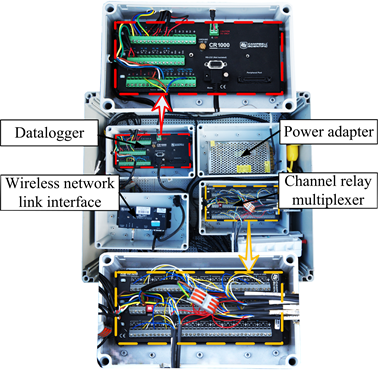 Wireless Transmission Datalogger (Campbell Scientific CR1000).
Wireless Transmission Datalogger (Campbell Scientific CR1000).Pressure Measuring System
The digital pressure sensing device is used to measure force as a change in electrical resistance at each sensel in real time, which can be represented on the computer screen during loading. The monitoring procedure is realized by using the TekScan sheet sensor on the surface of the sample.
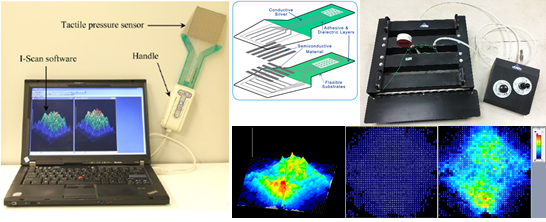 I-SCAN Pressure Mapping System (Tekscan Ltd.).
I-SCAN Pressure Mapping System (Tekscan Ltd.).Accessories
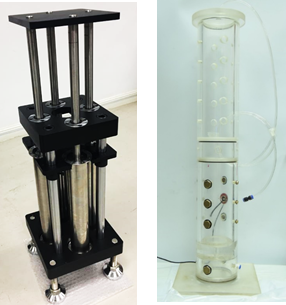 Lab-designed Geotechnical Test Sample Preparation Device (left); Lab-designed Infiltration Test System for Unsaturated Soil.
Lab-designed Geotechnical Test Sample Preparation Device (left); Lab-designed Infiltration Test System for Unsaturated Soil.
Numerical Modeling
The lab can conduct numerical modelling in geotechnical engineering by using various geotechnical modelling software, such as ABAQUS, PLAXIS 2D, PLAXIS 3D, FLAC, MATLAB and Discrete Element Modeling tools including PFC 2D and 3D.
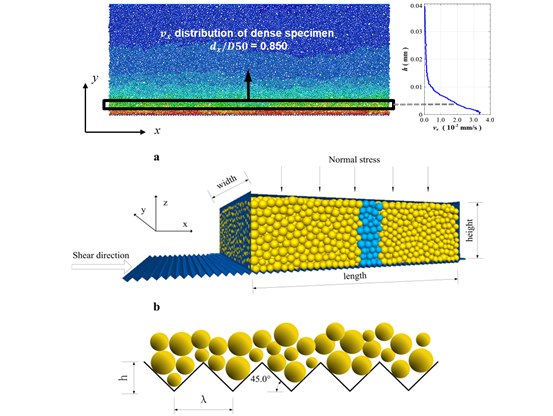 2D&3D model of interface shear test via PFC (Jing et al., 2017)
2D&3D model of interface shear test via PFC (Jing et al., 2017)

